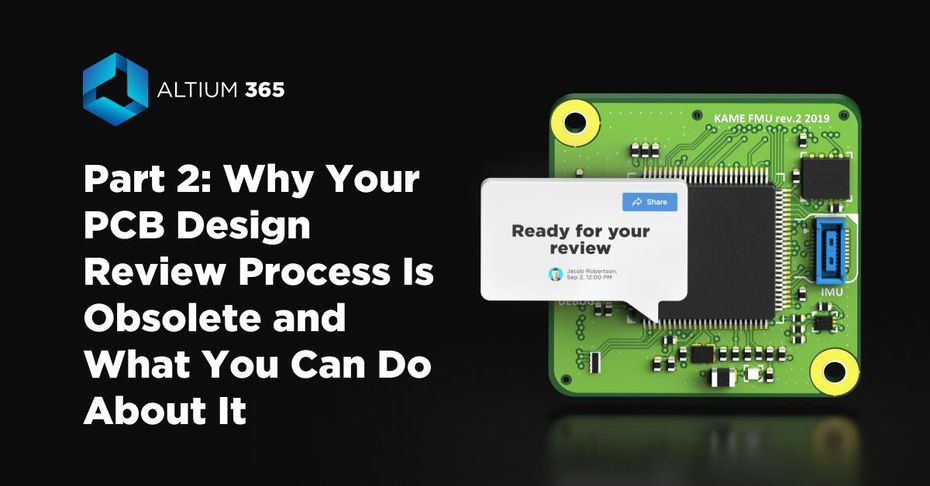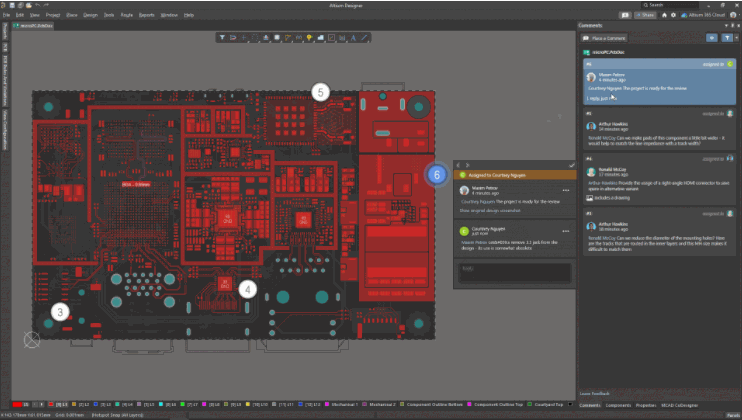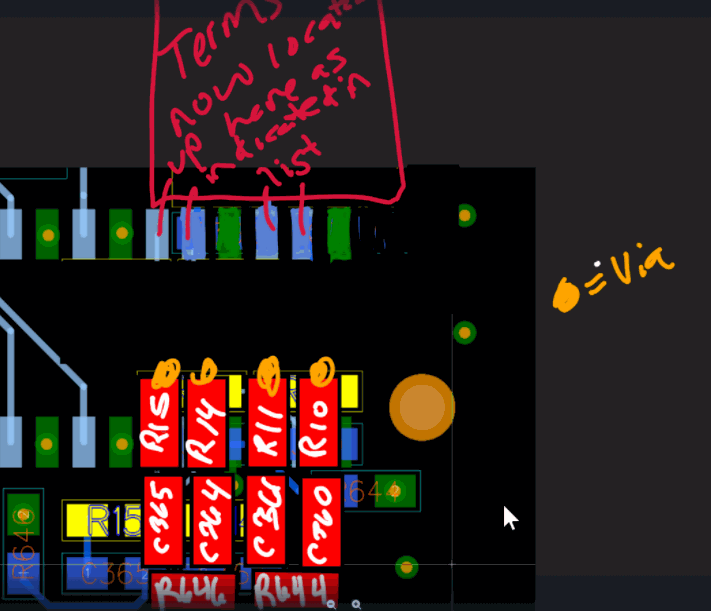
As we established in Part 1, the PCB design review and collaboration practices have room for improvement in many organizations. To address this, we developed Altium 365. Let's examine how running a PCB project through Altium 365 compares to other methods.
One source of truth, visibility, and version control
To start using Altium 365, you need to create a workspace and a centralized location for your design files, libraries, and collaboration. Once you have a workspace, you can connect to it directly from Altium Designer. After you upload your project to Altium 365, you can continue working in Altium Designer as you usually would. When you're satisfied with local changes, you can save your work to the server to make changes visible to others. Altium 365 will start tracking the history of changes, and you will always be able to see who made an update and when, what was changed, and what version is the latest.

Real-time access from any device
Now that you have your project in Altium 365, you can share it with as many people as you want early in the design process. You have full control of who can see, edit, and download the files. As you commit updates to Altium 365, everyone will always see the latest version you saved to the server when they log into Altium 365.
You can connect to the platform directly from the Altium Designer or log in through a web browser. Let's focus on the latter option—logging in via a web browser. What this means in practice is that once you share your project with specific people, they can open and view it from any device, including an iPad or phone, without the need to install Altium Designer.
In-context design annotation and markup
Interactive commenting in Altium 365 allows you to attach comments to documents or specific objects in your design (available for schematic documents and 2D and 3D layout modes in PCB) and tag people to resolve issues. You can leave a comment either via the web browser or in Altium Designer; it will sync again and appear in both locations, always in the context of your design.

What makes interactive commenting interactive is that you can provide feedback in the form of text and visually highlight an area or draw over the design. The drawing will be contained in the comment object and not appear on the actual schematic sheet or PCB document. Remember that you can open project files through a browser on an iPad or phone. Combined with the drawing capabilities, this offers some neat ways to provide and capture feedback.
One of our users shared the screenshot below, in which they replaced the red pen and paper with an iPad and stylus. They can still redline the design, but all markups are digital, stored in one central location, and visible to all project participants.

Traceability and documentation of project communications
Suppose you work in an industry requiring all communications to be documented for historical, legal, or auditing purposes. In that case, you can export the comments history (for both resolved and unresolved comments) into a PDF file, along with screenshots of the design's original state.
Let's sum it up: If you run your project through Altium 365, all your project stakeholders will always have access to the latest committed version. The feedback is captured in the design context, with a clear history of comments and changes captured automatically. Now everyone can log in, review, and contribute feedback at their own pace at any stage of the design, turning your review process into what our users dubbed an "asynchronous" or "continuous" design review.
As a result, as one of our users from Breville reports, "with Altium 365, all communication stays within the project, providing greater transparency, traceability, and accountability of all data." Running their design review and project communications through Altium 365, combined with other features the platform offers, allowed Breville to cut their product development time, in their own words, by at least four times.
Why do I need to use Altium 365 if there are many cloud storage and version control solutions out there?
Some of our more skeptical users might ask why you need Altium 365 if Dropbox and Google Drive are available — why not just use GitHub or something similar for version control?
While we would need another article to provide a detailed answer, let's say that none of these tools was created to handle ECAD files and hardware design processes. While they can improve storing everything on your local drive, they will remain disconnected from the hardware development cycle. We have users who have built quite robust processes with these tools, but there is always a need for workarounds and compromises, and you need to maintain multiple third-party tools.
One simple example: Try to upload a schematic sheet to Google Drive and then open the file in your browser or share it with someone who does not have an Altium Designer license. It will look something like this. Not very useful, right?
We believe that the entire electronics design industry deserves better productivity and collaboration tools. If you are not an Altium customer, you can create a free account with Altium 365. While you will not get the same version control and data management features as Altium Designer users, you can store your design files in one centralized, natively CAD cloud, add comments, and easily share them with others free of charge.
Altium 365 web technology currently supports the following formats: Altium Designer (SchDoc, PcbDoc), Autodesk®️ EAGLE™ (SCH, BRD), Gerber (RS-274X, X2), and KiCad (in Beta).